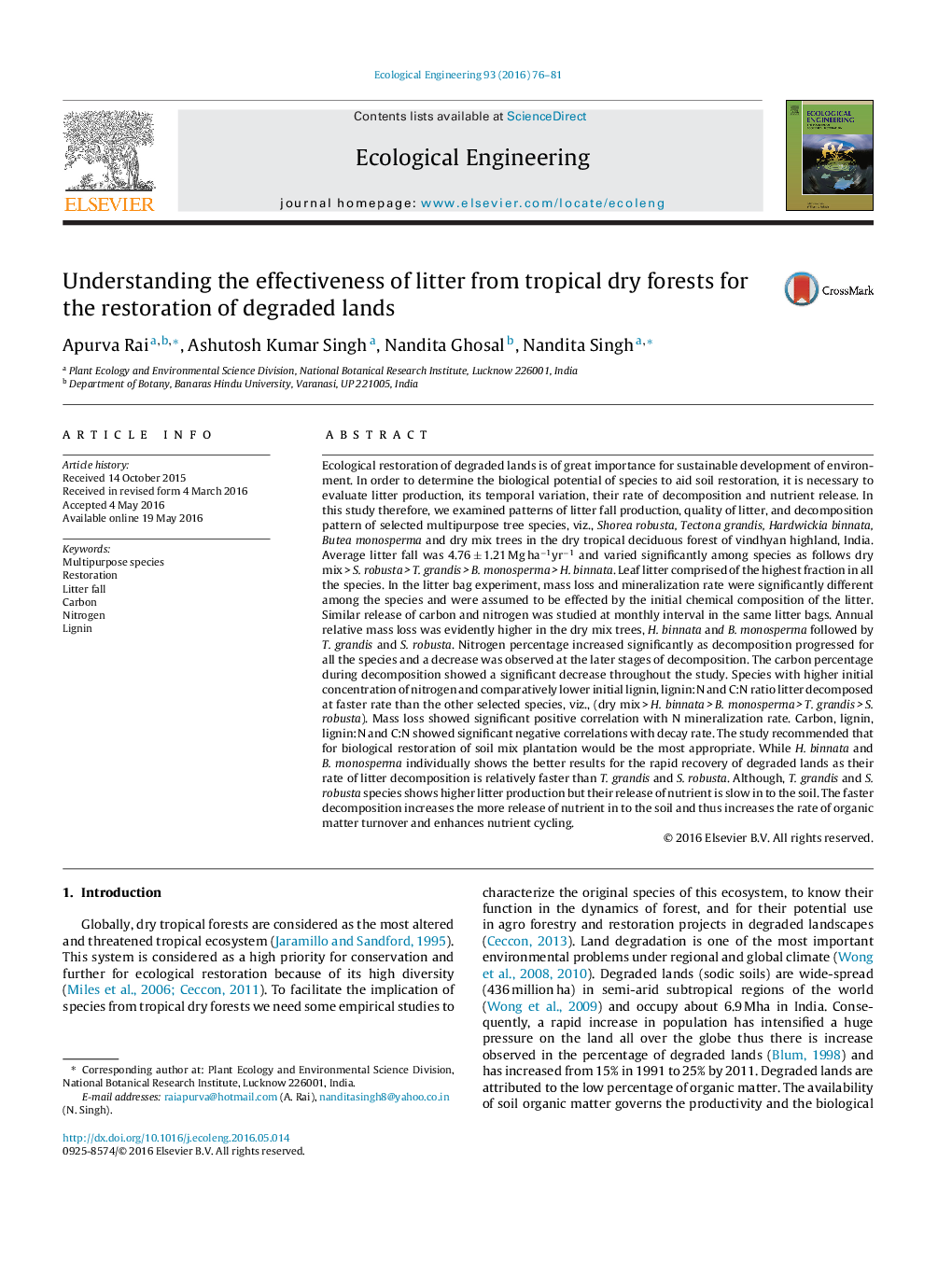| Article ID | Journal | Published Year | Pages | File Type |
|---|---|---|---|---|
| 4388715 | Ecological Engineering | 2016 | 6 Pages |
•Restoration of degraded land by natural forest is an important tool.•Screening of potential species on the basis of litter quality.•Species with good litter quality are more valuable in restoration.
Ecological restoration of degraded lands is of great importance for sustainable development of environment. In order to determine the biological potential of species to aid soil restoration, it is necessary to evaluate litter production, its temporal variation, their rate of decomposition and nutrient release. In this study therefore, we examined patterns of litter fall production, quality of litter, and decomposition pattern of selected multipurpose tree species, viz., Shorea robusta, Tectona grandis, Hardwickia binnata, Butea monosperma and dry mix trees in the dry tropical deciduous forest of vindhyan highland, India. Average litter fall was 4.76 ± 1.21 Mg ha−1yr−1 and varied significantly among species as follows dry mix > S. robusta > T. grandis > B. monosperma > H. binnata. Leaf litter comprised of the highest fraction in all the species. In the litter bag experiment, mass loss and mineralization rate were significantly different among the species and were assumed to be effected by the initial chemical composition of the litter. Similar release of carbon and nitrogen was studied at monthly interval in the same litter bags. Annual relative mass loss was evidently higher in the dry mix trees, H. binnata and B. monosperma followed by T. grandis and S. robusta. Nitrogen percentage increased significantly as decomposition progressed for all the species and a decrease was observed at the later stages of decomposition. The carbon percentage during decomposition showed a significant decrease throughout the study. Species with higher initial concentration of nitrogen and comparatively lower initial lignin, lignin:N and C:N ratio litter decomposed at faster rate than the other selected species, viz., (dry mix > H. binnata > B. monosperma > T. grandis > S. robusta). Mass loss showed significant positive correlation with N mineralization rate. Carbon, lignin, lignin:N and C:N showed significant negative correlations with decay rate. The study recommended that for biological restoration of soil mix plantation would be the most appropriate. While H. binnata and B. monosperma individually shows the better results for the rapid recovery of degraded lands as their rate of litter decomposition is relatively faster than T. grandis and S. robusta. Although, T. grandis and S. robusta species shows higher litter production but their release of nutrient is slow in to the soil. The faster decomposition increases the more release of nutrient in to the soil and thus increases the rate of organic matter turnover and enhances nutrient cycling.
